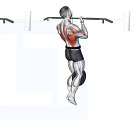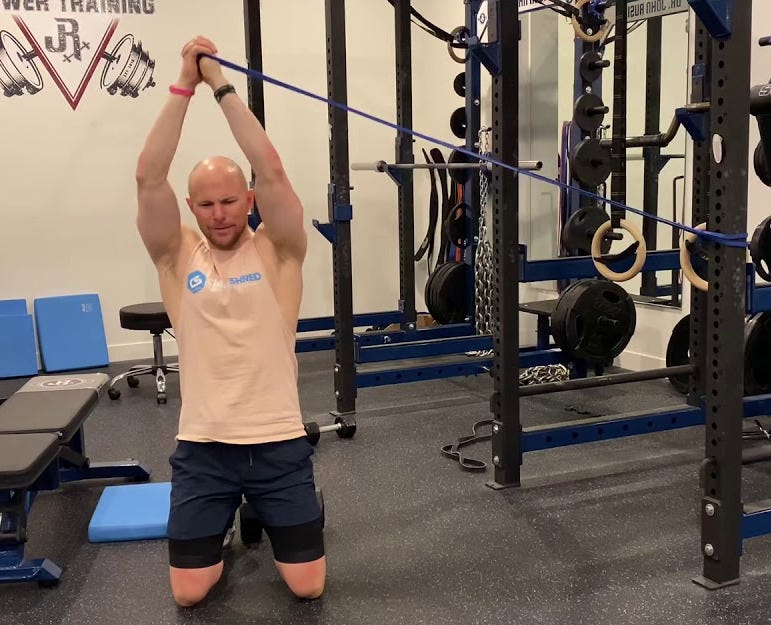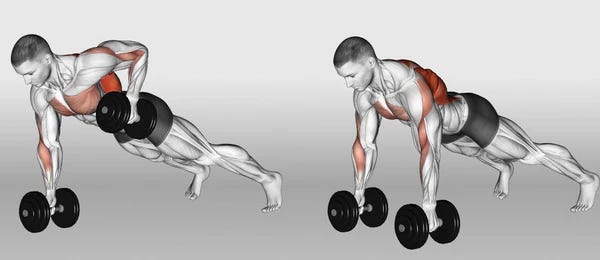Anti-Movement Movement Club
Exercise Essentials: Week 6
Hey team,
This week we are diving into our anti-movement core/trunk exercises (I will use trunk and core interchangeably, they mean abdominal muscles + other surrounding muscles that aren’t your abs).
Core exercises are always popular on social media because there are so many variations that you can keep coming up with, and people love novel exercises.
The reason you will see so many variation is because your torso can flex, extend, rotate, and laterally flex. With these movements, we also have the reverse anti-flexion, anti-extension, anti-rotation, and anti-lateral flexion (although anti-flexion is usually not spoken about that much). So we essentially have 8 different movements that can strengthen all different aspects of your trunk muscles.
Today we are going to explore these “anti-movement”, movements and as always, I’ll throw in some variations that I like.
The Anti-Movements
As I said before, there are a few different categories of anti-movement, movements.
Anti-flexion - not spoken about that much, this is where you are resisting a force that is trying to cause your spine to flex. We train this a lot through other exercises, especially on big compound lifts like squats and deadlifts where if we have too much flexion we won’t be able to lift the weight.
Anti-extension - the opposite of anti-flexion (kinda), now you are trying to stop your torso from extending. This is your classic planks and deadbug variations. Like anti-flexion, we incidentally train anti-extension in our compound lifts. In fact, back squats around 80% of your 1 rep max (e.g. your 1RM is 100kgs, 80% is 80kgs, maths lesson over) have a greater activation of your Rectus Abdominis (6-pack muscles) compared to planks.
Anti-rotation - here you are trying to resist against rotation of your spine. Pallof press is a classic example of an anti-rotation exercise, although I think there are some better options which I’ll show you shortly.
Anti-lateral flexion - here you are trying to stop your spine from bending sideways. Imagine holding a heavy weight in one hand by your side, anti-lateral flexion is you resisting that weight pulling you sideways towards the ground.
It is worth know that not all of these “movements” require specific exercises to target them. A lot of anti-movement strengthening can occur during our major compound lifts just due to the nature of them.
Touching Base:
ICYMI: Last week on Exercise Essentials, we looked at the upper body pull movements. You can check it out here.
High Quality Creatine: Lack of sleep or want to crack that squat PB? Creatine can boost your cognitive and physical performance, get 5% off your next order from Wonder Foods Australia.
Upgrade to Paid: If you enjoy these articles and want to support the work that goes into them, just click the button below:
Ok, back to the fun stuff
Some Variations I Like
Anti-Flexion: Front Squats
I know I’ve already told you about Front Squats in the first edition of Exercise Essentials, but as far as anti-flexion goes, these are pretty good. The bar position on a Front Squat means that the weight is pulling your spine into flexion, and you have to prevent that from happening, otherwise the bar will fall.
Anti-Extension: Banded Deadbugs
Deadbugs, not a bad exercise. But to make them a real challenge, try adding in a band. Now you are having to resist against your spine extending from either end of your body.
It’s a killer variation and you should give them a go.
Anti-Lateral Flexion: Kneeling Overhead Pallof Hold
I think that takes the cake for longest exercise name in the series so far. I’m aware that I said I don’t like a Pallof Press, but this is a variation that makes them worthwhile. The overhead position makes the resistance arm long and means that you don’t need a heavy band to give you quite the challenge.
Anti-Rotation: Renegade Rows
Like the Front Squat for anti-flexion, it might seem a bit strange to have a pulling exercise in for core work, but trust me, they are. The challenge on a renegade row is to keep your torso as stable as possible, while pulling a dumbbell towards you. Similar to our Kneeling Overhead Pallof Holds, you don’t need much weight for these to provide a good challenge for your trunk muscles.
That’s All Folks!
That’s it for this weeks edition of Exercise Essentials.
We are rapidly approaching the end of this series, with only 2 weeks left to go.
Next week we will be looking at trunk movements.
Chat soon,
Jono





